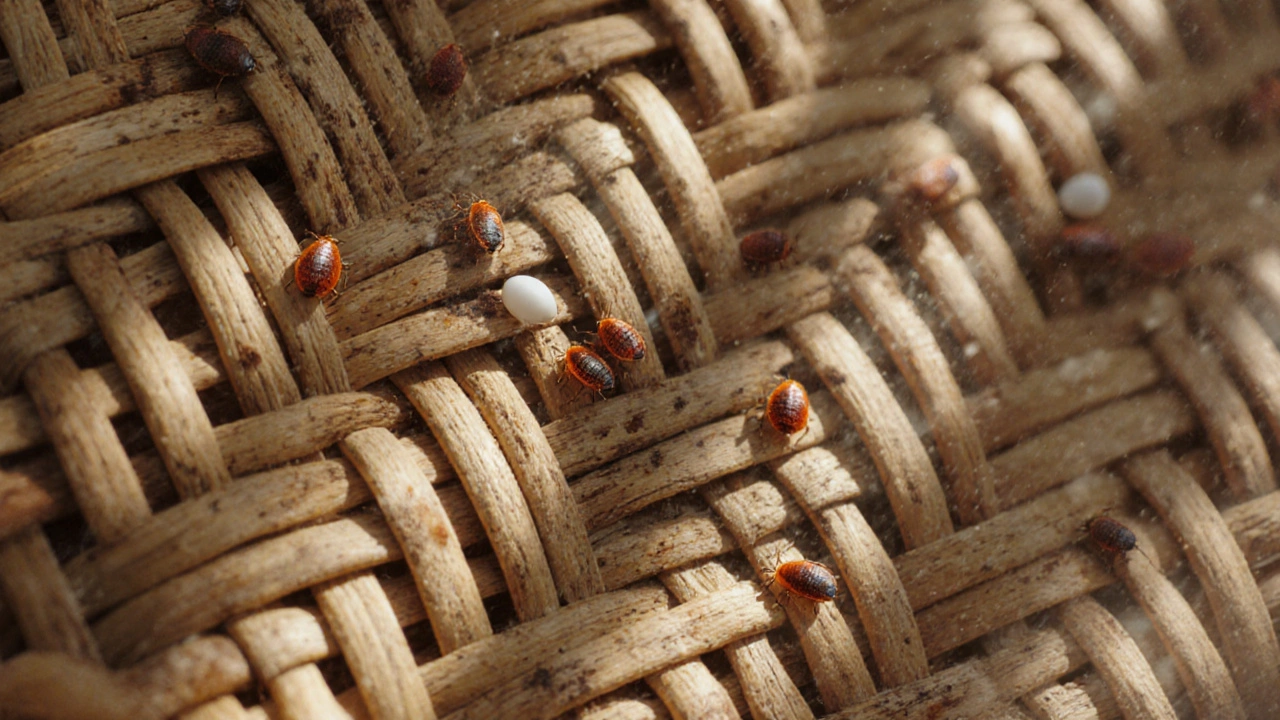Bed Bug Hiding Spots: Where They Hide and How to Find Them
When you hear bed bug hiding spots, the specific locations where bed bugs live, breed, and wait to feed. Also known as bed bug harborage areas, these are not random—they follow patterns tied to human sleep habits, furniture design, and clutter. Bed bugs don’t fly or jump. They crawl, and they stick close to where people rest. That’s why they’re most often found within inches of your bed—not just in the mattress, but in every crevice nearby.
Think about your bedroom like a maze for these pests. They love tight spaces that keep them hidden during the day and give them quick access at night. The most common hiding spots include the seams of your mattress, the joints of your bed frame, behind headboards, and inside nightstands. But they don’t stop there. Look under loose wallpaper, inside electrical outlets, along baseboards, and even inside picture frames hanging near the bed. A single female can lay up to five eggs a day, and those eggs stick to surfaces like glue. If you’ve seen one, there are likely dozens more nearby.
It’s not just your bed. Bed bugs spread through movement—clothes, bags, used furniture, even laundry baskets. That’s why they show up in couches, chairs, and other upholstered furniture. Check the stitching along the arms and cushions. Look behind the fabric on the underside of chairs. Even the legs of your furniture can hide them if they’re hollow or have small gaps. If you’ve recently bought secondhand furniture, that’s a red flag. Bed bugs hitchhike. They don’t care if it’s expensive or cheap—they just want warmth and cover.
Why does this matter? Because finding them early stops an infestation before it becomes a nightmare. Most people don’t notice bed bugs until they’re biting them at night. By then, the bugs have spread to other rooms. But if you know where to look, you can catch them before they multiply. A flashlight and a credit card are all you need. Run the card along seams and cracks—bed bugs panic when disturbed and will scurry out. Look for tiny black dots (their poop), shed skins, or the bugs themselves—about the size of an apple seed, reddish-brown, and flat.
It’s not just about cleaning. It’s about inspection. You can wash your sheets, vacuum your floor, and still miss the source if you don’t check the right places. And don’t assume your home is too clean for them. Bed bugs don’t care about hygiene. They care about blood. Even the neatest homes get them. What matters is knowing where to look—and how often.
The posts below give you real, practical checks you can do right now. From how to inspect a secondhand sofa to what to look for in a hotel room, you’ll find clear steps that actually work. No fluff. No scare tactics. Just what to check, where to look, and how to act before it gets worse.




